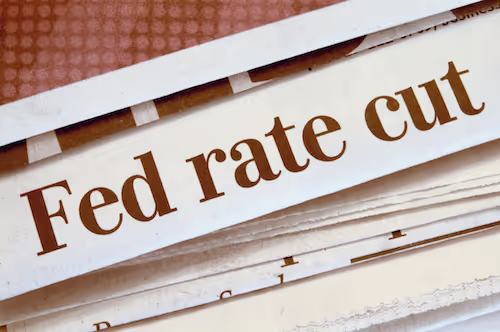Fed rate cuts: why High Yield Corporate Bond ESG ETF investments benefit
Discover and decode finance and emerging technologies with Velesios, a company that empowers businesses and individuals to earn daily interest on their cash with security and flexibility.

The U.S. Federal Reserve recently cut rates for the first time in 2025, citing a weakening labor market. At the same time, President Trump has been publicly pressuring the Fed for more aggressive easing to boost the economy ahead of elections. Analysts now expect additional rate cuts if data confirms the slowdown.
For both individuals and companies, this creates a favorable environment for high yield corporate bond ETFs, such as the Amundi EUR High Yield Corporate Bond ESG UCITS ETF (LU2346257210). When rates decline, high yield bonds typically perform strongly, making them an attractive complement to money market strategies like Smart Overnight.
Recent rate cuts and political pressure
- The Fed lowered its policy rate by 25 basis points, now in the 4.0%–4.25% range.
- Trump-appointed Fed board member Stephen Miran has argued for faster and deeper cuts.
- Chair Jerome Powell remains cautious but admits the Fed is open to further easing if inflation continues to slow and the labor market weakens.
Markets are already pricing in additional cuts, making this a critical turning point for fixed income investors.
Why high yield bonds benefit when rates fall
Bond markets move inversely with interest rates:
- Rates down → bond prices up: existing bonds with higher coupons gain value.
- High yield bonds double the benefit: investors collect attractive coupons and benefit from price appreciation when rates decline.
- Historical performance: in past easing cycles, high yield bonds have outperformed money market instruments.
- ESG dimension: the Amundi High Yield ESG ETF adds responsible finance criteria, making it attractive to institutions seeking sustainable investments.
Implications for investors
- In rising rate environments, Smart Overnight (money market ETF) is usually the safer option.
- In falling rate environments, Amundi High Yield ESG can become the main driver of returns.
- By combining both, investors balance their treasury allocation: liquidity and safety on one side, higher yield potential on the other.
- This dual approach is particularly powerful for both corporate treasury and individual portfolios.
How Velesios helps you act
- Simple onboarding: open an individual or corporate securities account directly on the Velesios platform.
- Interactive Brokers in the background: execution and custody handled by a trusted global broker.
- Lower costs: through order aggregation, we reduce trading fees for our clients.
- Smart dashboard: monitor rate-sensitive products like Smart Overnight and Amundi High Yield ESG in one place.
Conclusion
The Fed’s rate cut and Trump’s political pressure mark the beginning of a potential easing cycle. This environment is highly supportive for high yield corporate bond ETFs.
Through Velesios, individuals and companies can easily access the Amundi High Yield ESG ETF to benefit from this trend, while keeping Smart Overnight for liquidity and balance.
FAQ: Fed rate cuts and high yield ETFs
Why do high yield corporate bonds rise when rates fall?
Because their fixed coupons become more attractive, driving up their market price.
Are high yield bonds riskier than money market ETFs?
Yes, they carry credit risk, but diversification in ETFs like Amundi High Yield ESG helps mitigate this.
Should I abandon money market ETFs when rates fall?
No — they remain crucial for liquidity. The best approach is to combine both.
Who can invest in these ETFs?
Both companies and individuals can access them via a Velesios account.
Sources & references
- Reuters – Fed’s Williams: Recent rate cut aimed at bolstering job market
- AP News – Powell signals Fed to move slowly on rate cuts
- Reuters – Fed Vice Chair Jefferson: job market weakening
- Investopedia – Inverse relationship between interest rates and bond prices
- J.P. Morgan – What upcoming rate cuts mean for fixed income investing
If you'd like to find out more about the investment products we offer at Velesios, we're pleased to present them here.

The French paradox: record cash levels, record inaction to put that money to work

The invisible inflation: how low yields quietly erode French corporate cash

Why ESG investments are becoming a core part of corporate treasury strategy

We care about your data and only use cookies to improve your user experience. By using this website, you agree to the use of these cookies in accordance with our Privacy Policy.
.svg)